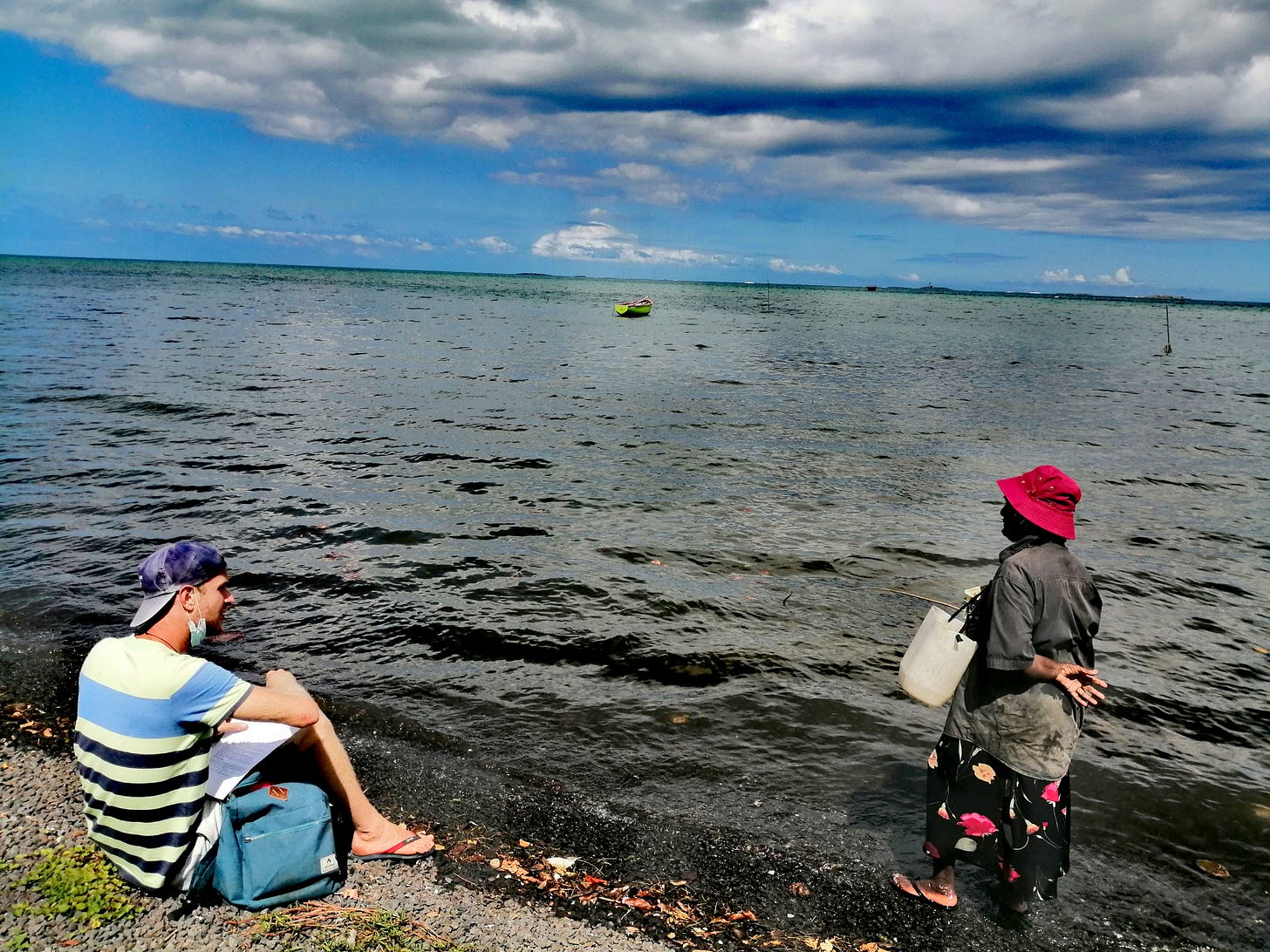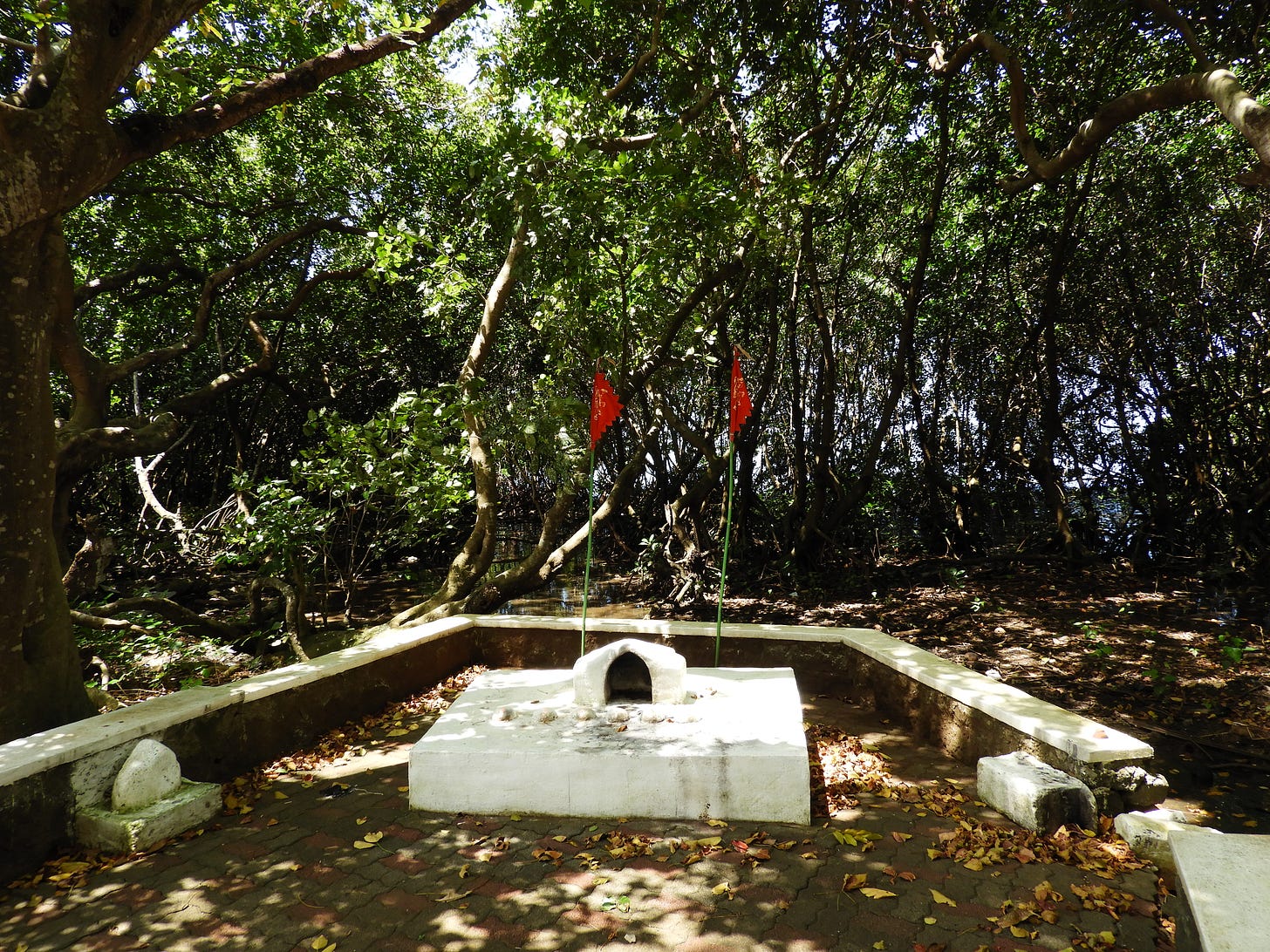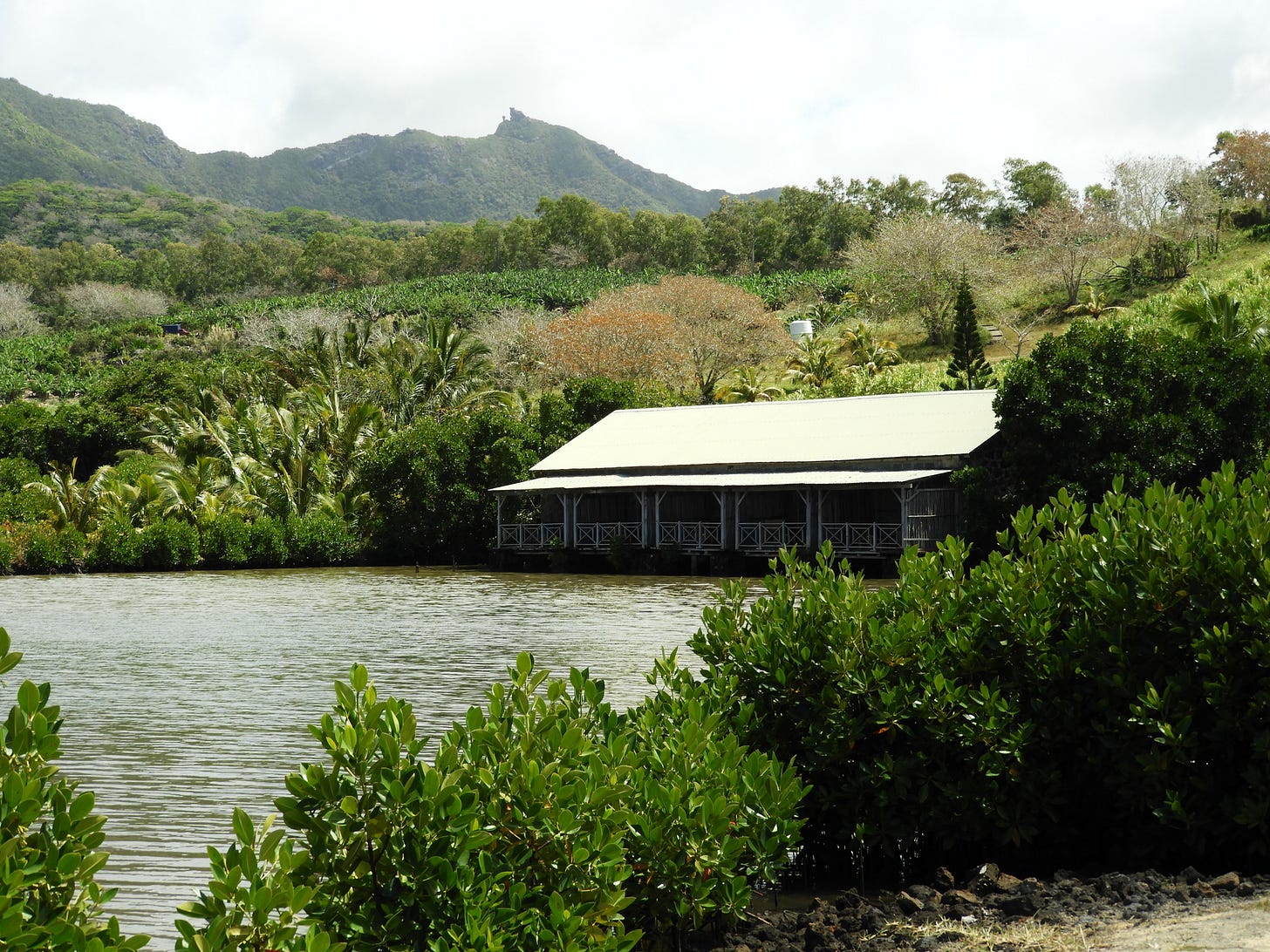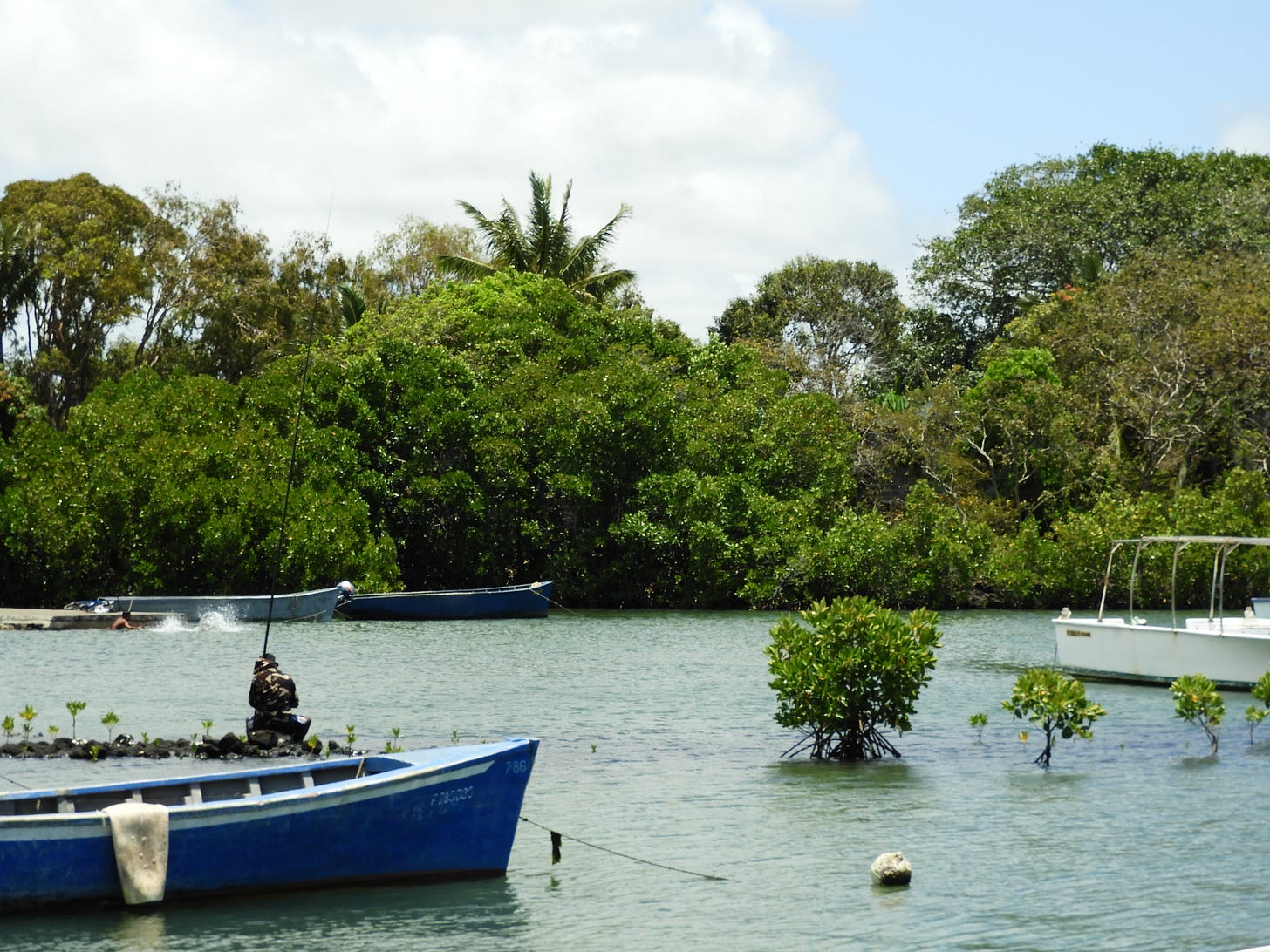Urgent Intervention Required for Women Fishers and Mangrove-Coastal Ecosystems in Mauritius
"…the government intervened to protect the mangroves, which was good but overly strict, neglecting traditional and ancestral uses, like people using mangrove roots to counter diabetes..."

In Mauritius, an Indian Ocean Island off the eastern coast of Africa, stewards and users of the coast are expected to experience environmental and socio-economic insecurity if their traditional relational approaches to mangrove use are not formally integrated into policy and governance, according to a new study published in the Journal of Ethnobiology.
This study was driven by researchers from the University of Montpellier, University of Mauritius, University of Nebraska, and the Indian Ocean Islands Foundation. They utilized a mixed-method approach, including interviewing affected ocean stewards, to show the evolution of human-mangrove couplings across generations of Mauritians, its impacts on socio-ecological resilience, and the urgency of intervention required to save this relationship, which has helped preserve the coastal ecosystem in the country. Findings from the study showed decline in transmission of oyster-harvesting knowledge across matrilineal generations, vivid disparagement and discrimination of women fishers, as well as rising communal and environmental challenges to mangrove and coastal conservation in Mauritius.
Speaking to The Habibat Project for a Q&A, the lead researcher and project manager at the Indian Ocean Islands Foundation, Raphael Merven, elaborated on their findings and emphasized the need for valorization of key indigenous knowledge and events, as well as urgent changes to socio-environmental policies, from community-based barachois management to conservation education, to preserve what is left of this declining indigenous coastal socio-ecological system.
(The interview has been edited for length and clarity).
Coastal ontologies from the respondents, like “the sea is my mother” and another where an oyster was used to cut a child’s umbilical cord, revealed deep human-coastal ties. How can policy frameworks in Mauritius recognize these spiritual connections in addition to the existing biophysical and economic ones?
We have deep-rooted top-down policies, structured by state-led authority and imposed on practitioners and resource users in spaces like the lagoon and the sea. It’s difficult for this rigid structure to capture the essence of identity and connection to the sea. In Mauritius, we tend to view [policymaking] from economic or ecological angles, forming a sea community excluded from policy. When complaints arise, the policymakers claim, “This is legal, as per the policy,” ignoring these needs and perceptions. For policy change, we discussed in the paper the need to create spaces for dialogue with coastline dwellers, especially sea users, to express their needs and feelings when events occur. How does it affect their relationship with the sea and their activities? How can they shape coastal development and major decisions impacting them? We need coastal democracy on environmental and social topics. The second step would be a mainstreaming exercise, as laws and policies are fragmented: one for fisheries, others for mangroves, planning, and pollutant emissions into the sea, yet everything is connected.
The study portrays Mauritians as ecocentric in their approach to barachois and mangrove-systems management, yet the Fisheries Act of 2023 significantly limits the direct use of mangrove plants. Isn’t there a bit of a contrast there?
This is a good question, and I discussed it with my co-authors. The data shows an ecocentric perception, but my [other] hypothesis is that the people [additionally] value mangroves for social and cultural activities. There’s a difference between activity and perception. NGO programs heavily influenced this perception, emphasizing mangroves’ conservation value in boosting marine productivity, protecting coastlines from cyclones, and serving as fish nurseries. Yet, I think the activities from utilizing mangroves hold value too, even if not directly reflected in perception. This blend fosters socio-ecological resilience, valuing the social, spiritual, and cultural aspects of mangroves alongside their ecological benefits. However, the [government] policy banning direct use of mangroves is complicated. Mangroves were once called nuisances in Mauritius; they were burned and cut for blocking seaside views. So, the government intervened to protect the mangroves, which was good but overly strict, neglecting traditional and ancestral uses, like people using mangrove roots to counter diabetes or its branches to create tools to take crabs from the mud. Balance is required.

The study highlights available data from 2019 showing that there were only 35 registered female fishers in Mauritius, reflecting gross inequality in an island of fisherfolks and rendering the majority unregistered fisherwomen ineligible for support. How does this happen?
The main barrier is a structural lack of recognition. It’s tough, even shocking, but the authorities don’t recognize women as professional fishers. This affects not just their registration but is fueled by doubt about women’s abilities in the fishery sector, questioning their capacity to lead activities that provide household income. Other issues stem from longstanding gender inequalities. Women have less access to higher education, financial security, and land ownership, creating barriers to forming cooperatives, navigating legal procedures, or gaining family support. Families may say fishing isn’t a woman’s role. These challenges pile up, feeling insurmountable [for them]. A major registration hurdle is preparing legal dossiers, which is difficult for many women. A dedicated service [for the fisherwomen] to provide answers to their questions, even if done by one person, would help.
Can you elaborate on a specific example of a matrilineal transmission system you observed in the field, perhaps from oyster collectors, that illustrate how intergenerational knowledge transfer contributes to socio-ecological resilience there?
Oyster collection in Mauritius is mainly done by women, mostly in mangroves, due to systemic marginalization in the fishery sector, where men are primary breadwinners. Women’s contributions are seen as additional, so they lack tools like boats with motors to access reefs, fishing nets, and elaborated gear men use to fish far from the coast. Women stay on the coastline, though in the southeast, two villages have strong fisherwomen communities. In [one of] the villages I investigated, women collect oysters and mollusks, called “mangwak,” “palourd,” “moul” in Mauritian Creole. Their marginalization causes them to give value to this activity, but it provides them with autonomy to support households without men, fostering a matrilineal system of knowledge transmission. I spoke with a three-generation family, grandmother, mother, and daughter, collecting oysters. This transmission is also of practice and identity. The mother teaches her daughter these sustainable practices, saying, “this made me who I am, and I want you to maintain it, because it gave me importance and autonomy.” She shows her how to collect oysters without killing the small ones, taking a little from one area and moving to another to preserve the population.
Can you describe the state of the barachois in Mauritius and recommend concrete policy modifications that can make community-based barachois management more successful?
A barachois is a cove with mangroves, historically used to produce fish, oysters, and crabs. It’s not economically attractive for private companies to rehabilitate due to low profit. In Mauritius, the majority of the coastline, up to 80 meters inland from the high-water mark, is public land leased to private entities – hotels and resorts. I suggest a system where a community group can propose a project with guidelines addressing social, economic, and conservation outcomes. One problem in Mauritius is the top-down structure. There’s no mechanism for community-based conservation or management; it’s never existed. There are no recognized indigenous or local communities in Mauritius, as per the law or reports to international conventions for biodiversity, climate change, or human rights. To change the narrative and empower communities to suggest initiatives, we need an institutional framework that allows for bottom-up policies. For Barachois, an abandoned one in Poste de Flacq [a coastal village on the east coast of Mauritius] has potential. A trust fund for community-based conservation could support a 15-year lease for the initiative, which can be renewable if it meets expectations. This needs further exploration.

An employee from Bambous Virieux barachois lodge described a “lifeless” period post-2020 oil spill, when oil got to the bottom of the barachois. What community engagement steps would best capture long-term socio-ecological impacts and recovery narratives from this event?
There have been many communications around the oil spill in Mauritius that happened in 2020, with lasting effects continuing today. A short film was released, campaigns were done, there was a lot of media coverage on the impact for coastal communities, and also continuous monitoring of the oil spill ecological impacts on some ecosystems, including mangroves. The long-term impact [of the spill] requires continuous monitoring at the social, economic and ecological levels. Unfortunately, we are already seeing that this effort is slowly starting to lose consistency and interest, while many households are still indebted due to the impact of the spill, and many families are yet to receive compensation. On our end, with my research team, we have a project in the pipeline to valorize some narratives and testimonies that we collected on the impact of the oil spill and other impactful events on mangrove socio-ecosystems. As a form of valorization of ancestral and traditional narratives, we would love to build podcasts or shortform videos to invite broader discussion around how to build resilience to increasing shocks for coastal communities in the country.
What is your solution to young Mauritians not participating in local traditions, like regattas (traditional sailboat competitions) or barachois management, which may help conserve local ecological knowledge?
For me, the answer is education and valorization; these are the two main pathways. Recently, Our Heritage Foundation in Mauritius, a community-based organization working on cultural, spiritual, and historical heritage, organized a month-long training on building regatta boats for community members, especially children. This addresses what’s lacking in Mauritius: valuing these practices and showing children their importance. Many children don’t know what a regatta, barachois, or casier, an artisanal fishing trap, is. We must reintroduce these Mauritian ways to connect with nature, reflecting who we are. Integrating this into school education, upscaling it, and creating dialogue spaces for coastal communities to express needs would help. Policymakers should listen to feedback, not just impose. Valorizing these practices show that they contribute to our national identity, social fabric, and are valued by many.

Can you elaborate with a specific example (if possible) of how the hybridization of scientific and traditional forms of knowledge could improve general ecosystem management as the study suggests?
The hybridization of knowledge forms we discussed, mainly between science-based and traditional or local ecological knowledge, is an integration and overlay of different types of information to guide management [of the ecosystem]. Taking the example of artisanal fisheries around mangroves, science-based knowledge does not usually recognize socially, culturally or politically-significant areas, like some fishing grounds, that may be more visited because they are associated with signs of ‘good fortune’ or individual stories. What science can tell however, is how the fishing stocks are doing at the lagoon level, the populations that are more or less stable, and the time period that could be regulated to allow for a species to regenerate. Also, the economic value of a fished species is based on what the consumer would prefer, usually tied to social or cultural preferences, that in return impacts fishers’ livelihood. I would thus believe that integrating and hybridizing these multiple forms of knowledge may allow for a more sound and holistic approach to fisheries and coastal management, including marine spatial planning processes.

